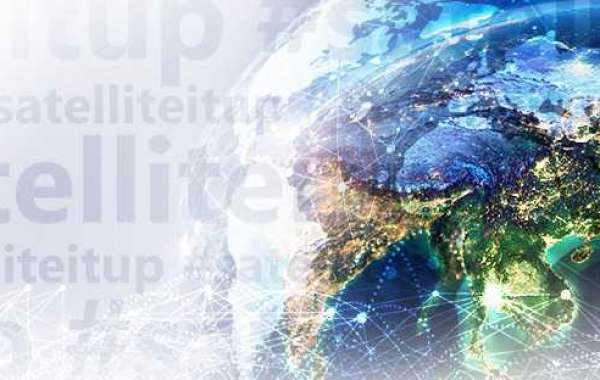In today's digital era, remote education has become increasingly important, especially in underserved and remote areas. The COVID-19 pandemic has further highlighted the need for remote education as schools and universities have shifted to online learning. However, traditional internet connectivity in remote areas poses a challenge for educators and students seeking access to reliable internet connections. In this blog, we will explore the benefits and solutions offered by satellite connectivity for remote education and how it has become the perfect alternative solution to bridge the digital divide.
The Challenges of Remote Education
One of the major challenges of remote education is the limitation of traditional internet connectivity in remote and underserved areas. In many cases, these areas lack the infrastructure required to provide reliable and high-speed internet access. The cost of building this infrastructure can be prohibitive, making it difficult to provide access to remote students. This digital divide has created an education gap, limiting the learning experience of students in remote areas.
Moreover, traditional internet connectivity may not be reliable in areas prone to natural disasters or power outages. In these instances, it may be impossible for students to access traditional internet connectivity, which can lead to missed classes and decreased educational attainment.
The Benefits of Satellite Connectivity for Remote Education
Satellite connectivity has become the perfect solution to the challenges of remote education. It offers continuous and reliable internet connectivity, allowing educators and students to access the same resources as their urban counterparts. Satellite communication solutions are durable and secure, and can withstand natural disasters and power outages, ensuring that the learning experience remains uninterrupted.
Satellite connectivity helps to bridge the digital divide in remote education and overcome geographical barriers, ensuring that students in remote areas can access quality education. It also enhances engagement and interactive learning, providing educators with the tools they need to keep students motivated and engaged.
Remote education has seen success stories and case studies involving the use of satellite connectivity. In rural Alabama, the Alabama Supercomputer Authority used satellites to ensure that students in remote areas received quality education. Similarly, in Nigeria, the Tertiary Education Trust Fund launched a Satellite-based optimized video conferencing application to improve the quality of education in underserved areas. These organizations have reported significant improvements in educational outcomes with higher graduation rates and standardized test scores among remote students.
Case Studies: Successful Implementation of Satellite Connectivity in Remote Education
Numerous organizations and regions have successfully implemented satellite connectivity in their remote education systems, leading to improved education outcomes for underserved and remote students. For example, in rural Alabama, the Alabama Supercomputer Authority used satellites to provide quality education to students in remote areas. Similarly, in Nigeria, the Tertiary Education Trust Fund (TETFund) launched a satellite-based system to improve the quality of education in underserved areas.
These organizations have reported significant improvements in educational outcomes, such as higher graduation rates and standardized test scores among remote students. Satellite connectivity has enabled these organizations to create an equitable educational environment in remote areas, bridging the digital divide to make education accessible to all.
Solutions Offered by Satellite Communication Providers
IEC Telecom is a leading provider of Satellite communications services with a range of hardware and software options that ensure reliable and high-speed internet connectivity. The Iridium Go!, the Iridium Certus, and the Inmarsat Fleet One are some of the hardware solutions offered by IEC Telecom that provide global coverage with L-band technology. These solutions enable educators to deliver online lessons, conduct virtual meetings, and provide access to learning resources seamlessly.
IEC Telecom also provides training and support services to ensure that educators have the necessary skills to use satellite connectivity solutions effectively. The support services ensure that the satellite communication solutions operate smoothly, and any issues or technical problems are resolved quickly, thereby ensuring an uninterrupted learning experience.
Best Practices for Implementing Satellite Connectivity in Remote Education
As you consider satellite connectivity as a solution for remote education, here are some best practices to keep in mind:
1. Consider the bandwidth requirements
Choosing the right satellite connectivity solution requires an understanding of bandwidth requirements. Remote education requires high-speed internet access, and the solution you choose must provide sufficient bandwidth to meet these demands.
2. Choose the right hardware
There are various hardware options available for satellite connectivity, and it's important to choose the right one for your needs. Factors to consider include portability, durability, and the size of the antenna.
3. Work with a reliable provider
When implementing satellite connectivity for remote education, it's important to choose a reliable provider with experience in satellite communication solutions for remote areas. Look for a provider with an established reputation and a track record of success.
Conclusion
Satellite connectivity has become a game-changer in remote education, bridging the digital divide in underserved and remote regions. It offers an efficient and reliable alternative to traditional internet connectivity, providing high-speed internet access, video conferencing solutions for remote areas, and secure connectivity to remote classrooms. With the right solutions and best practices in place, satellite connectivity can provide a high-quality educational experience to remote students, enabling them to overcome geographical barriers and access the same resources as their urban counterparts. By embracing satellite connectivity, we can ensure that no student is left behind in the digital age.










